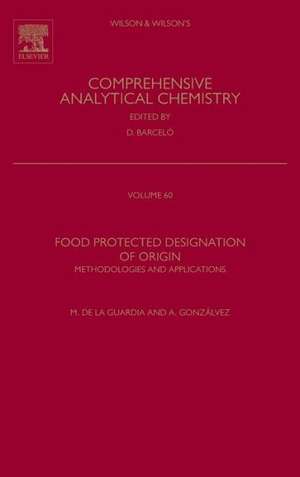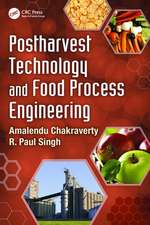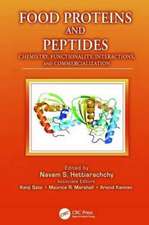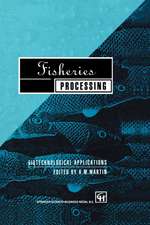Food Protected Designation of Origin: Methodologies and Applications
Miguel de la Guardia, Ana Gonzalvez Illuecaen Limba Engleză Hardback – 8 iul 2013
The economic value of these regional foods, as well as the increased interest from consumers and the food industry about the traceability and origin of food, mean that it has become necessary to establish methods for PDO and PGI authentication based on the specific characteristics and chemical markers of these kinds of products.
This book offers a complete guide of the methods available to authenticate food PDO, beginning with an explanation of the analytical and chemometric methods available for PDO authentication, before looking at the main foods covered, PGI labels and the social and legal framework for food PGIs. It will be of interest to people engaged in the fields of food production, commercialization and consumption, as well as policymakers and control laboratories.
- Offers a complete guide to the methods available for food Protected Designation of Origin (PDO) authentication
- Explains the analytical and chemometric methods
- Focuses on the various food products covered by authentication labels
Preț: 1415.74 lei
Preț vechi: 1939.37 lei
-27% Nou
Puncte Express: 2124
Preț estimativ în valută:
270.94€ • 281.82$ • 223.67£
270.94€ • 281.82$ • 223.67£
Carte tipărită la comandă
Livrare economică 15-29 aprilie
Preluare comenzi: 021 569.72.76
Specificații
ISBN-13: 9780444595621
ISBN-10: 0444595627
Pagini: 800
Dimensiuni: 152 x 229 x 43 mm
Greutate: 1.24 kg
Editura: Elsevier LTD, Oxford
ISBN-10: 0444595627
Pagini: 800
Dimensiuni: 152 x 229 x 43 mm
Greutate: 1.24 kg
Editura: Elsevier LTD, Oxford
Public țintă
Analytical chemists, food scientists, environmental scientists, toxicologistsCuprins
Part 0. Social and Legal Framework of PDO
1. Legal aspects of food protected designation
2. Consumers’ and producers’ expectations and gains from Geographical Indications: towards a conceptual context,
Part 1. Analytical and chemometric methods for food protected designation authentication
3. Mineral Profile
4. Stable isotope analysis
5. Vibrational Spectroscopy
6. Metabolomics and P.D.O.
7. ELISA tools for food P.D.O authentication
8. Genetic and DNA-based techniques
9. The role of Ion Mobility Spectrometry to support the food protected designation of origin
10. Electrophoretic techniques
11. Biosensors
12. Basic chemometric tools
13. Class-modelling and discriminant chemometric techniques for food P.D.O verification
14. Classification methods for multi-way arrays
Part 2. Food applications
15. Analytical and chemometric methods for wine protected designation
16. Other alcoholic beverages
17. Juices and non-alcoholic beverages
18. Authentication and traceability of fruits and vegetables
19. Cheeses
20. Honey authenticity and traceability
21. Vegetable oils
22. Coffee
23. Wheat and corn authenticity
24. Rice
25. Seafood origin assignment
26. Salt
1. Legal aspects of food protected designation
2. Consumers’ and producers’ expectations and gains from Geographical Indications: towards a conceptual context,
Part 1. Analytical and chemometric methods for food protected designation authentication
3. Mineral Profile
4. Stable isotope analysis
5. Vibrational Spectroscopy
6. Metabolomics and P.D.O.
7. ELISA tools for food P.D.O authentication
8. Genetic and DNA-based techniques
9. The role of Ion Mobility Spectrometry to support the food protected designation of origin
10. Electrophoretic techniques
11. Biosensors
12. Basic chemometric tools
13. Class-modelling and discriminant chemometric techniques for food P.D.O verification
14. Classification methods for multi-way arrays
Part 2. Food applications
15. Analytical and chemometric methods for wine protected designation
16. Other alcoholic beverages
17. Juices and non-alcoholic beverages
18. Authentication and traceability of fruits and vegetables
19. Cheeses
20. Honey authenticity and traceability
21. Vegetable oils
22. Coffee
23. Wheat and corn authenticity
24. Rice
25. Seafood origin assignment
26. Salt




























